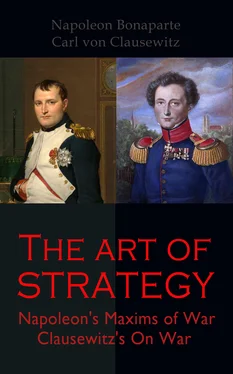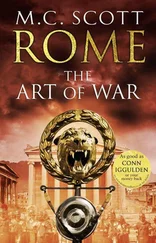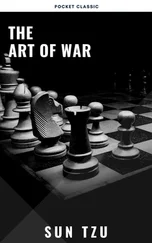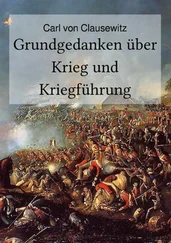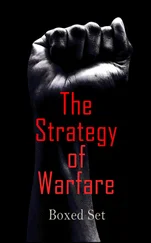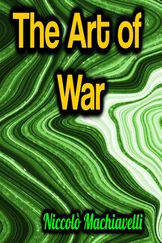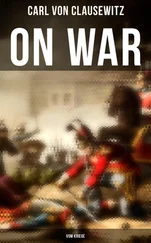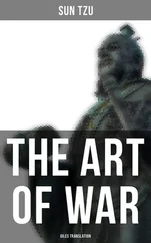But if the maintenance of the troops in camp or quarters calls forth activities which are no employment of the armed force, such as the construction of huts, pitching of tents, subsistence and sanitary services in camps or quarters, then such belong neither to strategy nor tactics.
Even entrenchments, the site and preparation of which are plainly part of the order of battle, therefore tactical subjects, do not belong to the theory of the conduct of War so far as respects the execution of their construction the knowledge and skill required for such work being, in point of fact, qualities inherent in the nature of an organised Army; the theory of the combat takes them for granted.
Amongst the subjects which belong to the mere keeping up of an armed force, because none of the parts are identified with the combat, the victualling of the troops themselves comes first, as it must be done almost daily and for each individual. Thus it is that it completely permeates military action in the parts constituting strategy—we say parts constituting strategy, because during a battle the subsistence of troops will rarely have any influence in modifying the plan, although the thing is conceivable enough. The care for the subsistence of the troops comes therefore into reciprocal action chiefly with strategy, and there is nothing more common than for the leading strategic features of a campaign and War to be traced out in connection with a view to this supply. But however frequent and however important these views of supply may be, the subsistence of the troops always remains a completely different activity from the use of the troops, and the former has only an influence on the latter by its results.
The other branches of administrative activity which we have mentioned stand much farther apart from the use of the troops. The care of sick and wounded, highly important as it is for the good of an Army, directly affects it only in a small portion of the individuals composing it, and therefore has only a weak and indirect influence upon the use of the rest. The completing and replacing articles of arms and equipment, except so far as by the organism of the forces it constitutes a continuous activity inherent in them—takes place only periodically, and therefore seldom affects strategic plans.
We must, however, here guard ourselves against a mistake. In certain cases these subjects may be really of decisive importance. The distance of hospitals and depôts of munitions may very easily be imagined as the sole cause of very important strategic decisions. We do not wish either to contest that point or to throw it into the shade. But we are at present occupied not with the particular facts of a concrete case, but with abstract theory; and our assertion therefore is that such an influence is too rare to give the theory of sanitary measures and the supply of munitions and arms an importance in theory of the conduct of War such as to make it worth while to include in the theory of the conduct of War the consideration of the different ways and systems which the above theories may furnish, in the same way as is certainly necessary in regard to victualling troops.
If we have clearly understood the results of our reflections, then the activities belonging to War divide themselves into two principal classes, into such as are only “ preparations for War ” and into the “ War itself. ” This division must therefore also be made in theory.
The knowledge and applications of skill in the preparations for War are engaged in the creation, discipline, and maintenance of all the military forces; what general names should be given to them we do not enter into, but we see that artillery, fortification, elementary tactics, as they are called, the whole organisation and administration of the various armed forces, and all such things are included. But the theory of War itself occupies itself with the use of these prepared means for the object of the war. It needs of the first only the results, that is, the knowledge of the principal properties of the means taken in hand for use. This we call “The Art of War” in a limited sense, or “Theory of the Conduct of War,” or “Theory of the Employment of Armed Forces,” all of them denoting for us the same thing.
The present theory will therefore treat the combat as the real contest, marches, camps, and cantonments as circumstances which are more or less identical with it. The subsistence of the troops will only come into consideration like other given circumstances in respect of its results, not as an activity belonging to the combat.
The Art of War thus viewed in its limited sense divides itself again into tactics and strategy. The former occupies itself with the form of the separate combat, the latter with its use. Both connect themselves with the circumstances of marches, camps, cantonments only through the combat, and these circumstances are tactical or strategic according as they relate to the form or to the signification of the battle.
No doubt there will be many readers who will consider superfluous this careful separation of two things lying so close together as tactics and strategy, because it has no direct effect on the conduct itself of War. We admit, certainly that it would be pedantry to look for direct effects on the field of battle from a theoretical distinction.
But the first business of every theory is to clear up conceptions and ideas which have been jumbled together, and, we may say, entangled and confused; and only when a right understanding is established, as to names and conceptions, can we hope to progress with clearness and facility, and be certain that author and reader will always see things from the same point of view. Tactics and strategy are two activities mutually permeating each other in time and space, at the same time essentially different activities, the inner laws and mutual relations of which cannot be intelligible at all to the mind until a clear conception of the nature of each activity is established.
He to whom all this is nothing, must either repudiate all theoretical consideration, or his understanding has not as yet been pained by the confused and perplexing ideas resting on no fixed point of view, leading to no satisfactory result, sometimes dull, sometimes fantastic, sometimes floating in vague generalities, which we are often obliged to hear and read on the conduct of War, owing to the spirit of scientific investigation having hitherto been little directed to these subjects.
CHAPTER II.
On the Theory of War
Table of Contents
1. THE FIRST CONCEPTION OF THE “ART OF WAR” WAS MERELY THE PREPARATION OF THE ARMED FORCES.
Formerly by the term “Art of War,” or “Science of War,” nothing was understood but the totality of those branches of knowledge and those appliances of skill occupied with material things. The pattern and preparation and the mode of using arms, the construction of fortifications and entrenchments, the organism of an army and the mechanism of its movements, were the subject; these branches of knowledge and skill above referred to, and the end and aim of them all was the establishment of an armed force fit for use in War. All this concerned merely things belonging to the material world and a one-sided activity only, and it was in fact nothing but an activity advancing by gradations from the lower occupations to a finer kind of mechanical art. The relation of all this to War itself was very much the same as the relation of the art of the sword cutler to the art of using the sword. The employment in the moment of danger and in a state of constant reciprocal action of the particular energies of mind and spirit in the direction proposed to them was not yet even mooted.
2. TRUE WAR FIRST APPEARS IN THE ART OF SIEGES.
Читать дальше
